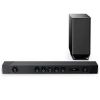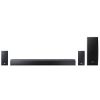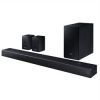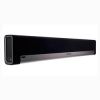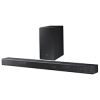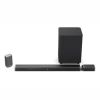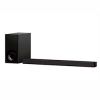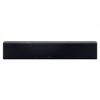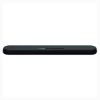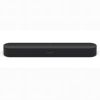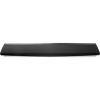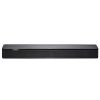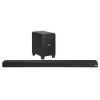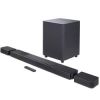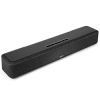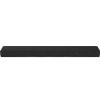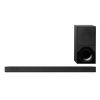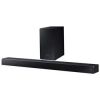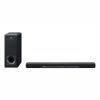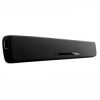| Overall | Audio features | Streaming services | Connectivity | Features | Multichannel surround | |||
|---|---|---|---|---|---|---|---|---|
| Samsung Q990B | 9.8 | 10 | 10 | 10 | 9 | 10 | See price | 120 |
| JBL BAR 1300X | 9.4 | 10 | 10 | 10 | 9 | 8 | See price | 136 |
| Samsung Q910B | 9.4 | 9 | 10 | 9 | 9 | 10 | See price | 121 |
| Samsung Q800B | 9.2 | 8 | 10 | 9 | 9 | 10 | See price | 122 |
| JBL Bar 9.1 | 9 | 9 | 10 | 10 | 9 | 7 | See price | 141 |
| JBL BAR 1000 | 9 | 9 | 10 | 10 | 9 | 7 | See price | 137 |
| JBL BAR 700 | 8.8 | 8 | 10 | 10 | 9 | 7 | See price | 138 |
| LG S95QR | 8.8 | 9 | 10 | 9 | 6 | 10 | See price | 105 |
| Sony HT-ST5000 | 8.6 | 9 | 7 | 9 | 10 | 8 | See price | 40 |
| Samsung HW-N950 | 8.6 | 9 | 10 | 7 | 10 | 7 | See price | 14 |
To get the most out of watching a movie or TV show, just one picture is not enough: you also need the appropriate sound. When there are not enough built-in speakers, the best bluetooth soundbar comes to the rescue - a compact mono speaker with several speakers inside. It can be as powerful and functional as a home theater, but at the same time, it takes up many times less useful space.
Bluetooth is a feature that is often found even in budget soundbars. In most cases, Bluetooth allows the soundbar to receive audio from smartphones and other mobile devices. However, some higher-end soundbars can send audio to wireless headphones and speakers. The latest innovation in soundbars is the wireless multi-room. With this functionality, you can use the soundbar associated with the mobile application to work in a multi-room system - listen to music from connected sources or streaming services and send tunes to other speakers on the same network.
To listen to music and watch videos, it is advisable to have a soundbar with a full subwoofer. Very often, subwoofers are needed by soundbars as low-frequency support for complete movie watching. And although soundbars often come with a subwoofer, some of them are not burdened by them. But if there is little space or you have a limited budget, then you can buy a soundbar without a subwoofer or with a built-in. And if you have a connector, you can add a subwoofer to the system yourself. Many soundbars with a subwoofer included communicate with it wirelessly to reduce the number of required cables, even if they have the necessary connector.
That is why we divided this article so that each bluetooth soundbar review has its own group. Hope it will boost the convenience of the soundbar choice, but still, all models have bluetooth.
With separate subwoofer
Sony HT-Z9F
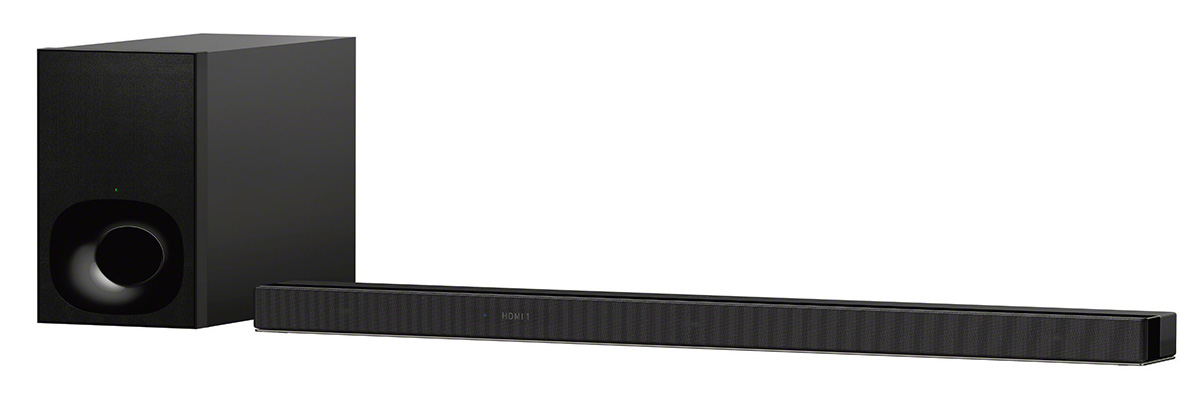
This compact and relatively inexpensive solution allows you to reveal the features of a multichannel soundtrack to a movie and play music from various sources, including wireless.
It seems that Sony designers draw soundbars in their free time. If some companies try to give devices original or even bizarre shapes, then everything is simple - a rectangular plastic-metal bar with a protective grid on the magnets in front.
But such minimalism has a practical side. A similar design is combined with almost any TV, echoing the delicate edging of the screen. The included Z9F wireless subwoofer is also devoid of individual features - a medium-sized plastic box with a phase inverter opening in front.
Under the removable grill of the Z9F soundbar, on the front panel, there are three 46mm broadband speakers working, respectively, on the front and central channels. Initially, the system was announced as a 3.1-channel soundbar with support for Dolby Atmos and DTS:X. This means that the kit is able to reproduce the surround sound in 7.1.2 format by simulating additional virtual speakers.
By the way, the system allows the connection of the Z9F wireless rear speakers - it’s only in the user manual that they may not be available in certain countries and regions. In our case, the virtual environment is formed using two proprietary technologies: S-Force PRO, which simulates the rear speakers, and Vertical Surround Engine, which depicts ceiling speakers. The last function is activated by pressing a special button on the remote control. Even if the sound is not multi-channel, the soundbar in this mode will try to give out some sound volumetric decorations - and, perhaps, someone will even like it.
The soundbar speakers are driven by the proprietary S-Master HX digital amplifier, which Sony often uses in a variety of devices, including portable players. It was designed specifically for high-resolution audio and works with the digital stream directly - without conversion to the analog signal. The built-in amplifier delivers 100 watts per channel, and another 100 watts fall on the subwoofer amplifier, which swings the 160-mm diffuser. 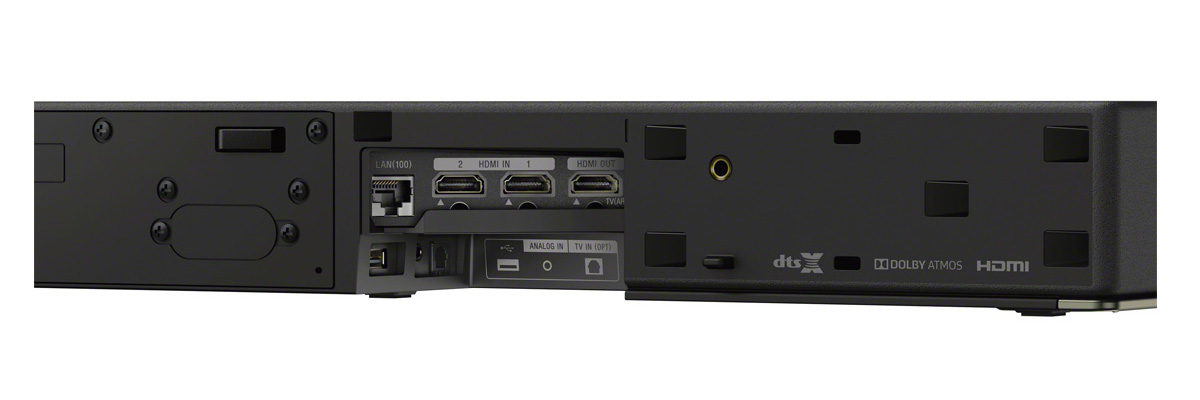
The communicative capabilities of the soundbar allow it to make friends with a variety of wired and wireless devices and actually increase the status of the device from an “audio appendage” to a TV to a home multimedia microsystem.
A TV and a multimedia set-top box can be connected using one of two HDMI connectors, in which case the system understands 16 modern sound formats, including LPCM 7.1ch, Dolby Atmos (TrueHD / Digital Plus), DTS-ES Discrete 6.1 / Matrix 6.1, DTS:X, DSD (.dsf and .dff), etc. The user manual emphasizes that “the HDMI IN 1/2 jacks do not support copy-protected audio formats such as Super Audio CD or DVD-Audio.”
Key specs
- Built-in channels: 3.1
- Separate subwoofer (in package): yes
- Bluetooth: yes
- Size (Wx H x D), cm/in: 100 x 6.4 x 10/39.4 x 2.5 x 3.4
- Official website
- Full specs
Pros
- Great for the everyday person who appreciates fantastic sound but just wants an easy living room setup
- There's a very noticeable difference with or without the rears
- The level of immersion in these speakers is completely magical
Cons
- Awful for large spaces, those who want huge amounts of volume, those expecting tower-level performance out of a soundbar
Samsung HW-Q90R

Samsung HW-Q90R is the singing and dancing flagship. Not only does it support object-oriented sound in the form of Dolby Atmos and DTS:X, but bluetooth soundbar for tv is also the only 2019 model to achieve this with real rear speakers and four up speakers.
Despite the confusing model number, the HW-Q90R wireless bluetooth soundbar is very similar to then last year's HW-N950. The new soundbar has a redesigned subwoofer and adds Active Sound and Game Pro modes, but there is little else between them.
Here we have a simple LED display that lights up when the soundbar receives a command, by providing basic information. In the upper central side of the soundbar, there are several controls for turning on/off, selecting inputs and adjusting the volume.
The supplied remote control is identical to then last year’s controller, but if it’s not broken, why repair it? This remains an ergonomic clasp with all the necessary buttons to make the operation of the HW-Q90R an efficient and intuitive process.
The left and right rear speakers have the same design and metal grilles as the main unit. Each speaker has drivers for forward and upward movement for the upper rear left and right channels, as well as built-in gain. The latter means that although they are wireless, you will need to connect them.
The upgraded subwoofer uses an 8-inch speaker with side inclusion, supported by a rear port for bass. The finish fits the rest of the system, with revised dimensions designed to improve low-frequency sound and overall control over last year.
The main feature of the Samsung HW-Q90R is support for Dolby Atmos and DTS:X (and their variants). However, what distinguishes it from other “bars” that you saw earlier is the ability to deliver these object audio formats using a genuine 7.1.4-channel setting, rather than resorting to acoustic radiation or psychoacoustics.
To achieve this, there are 12 speakers (including a subwoofer) using a total of 17 drivers. The front three channels use three drivers - two subwoofers and a broadband tweeter, and all other channels are based on one driver. 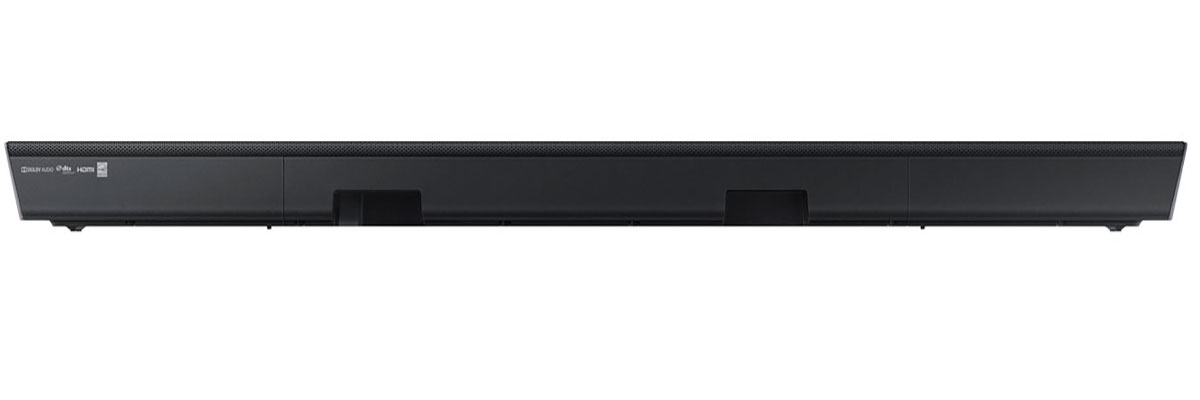
The speakers are divided into 12 channels: front left and right, center, two sides, two rear parts, two front heights, a pair of rear heights, and a subwoofer. All these speakers are equipped with a built-in amplifier with a power of 512 W, and the claimed frequency response of the system is from 34 Hz to 17 kHz.
One criticism of the HW-Q90 is that, despite the complexity of its object-oriented decoding and multi-channel delivery, the actual setup is pretty simple. Although this simplifies installation, it means that getting the best out of the system can be a little difficult.
As for the connections, there are two HDMI inputs and an output, each of which supports 4K / 60p, 4: 4: 4, Rec.2020, wide dynamic range (HDR10, HLG, HDR10 and Dolby Vision), 3D and HDCP 2.2. This should ensure that Samsung can handle anything.
Key specs
- Built-in channels: 7.1.4
- Separate subwoofer (in package): yes
- Bluetooth: yes
- Size (Wx H x D), cm/in: 122.4 x 8.1 x 13.4/48.2 x 3.2 x 5.3
- Official website
- Full specs
Pros
- The overall built quality is all premium. A metal finish to the edges and rear while still keeping it simple (not flashy), makes this a valuable accessory for your television
- Because of identical drivers, it’s easier to move the speakers around the three-dimensional soundstage without noticeably changing character from speaker to speaker
Cons
- It would be great if Samsung added some form of automatic calibration so that everything worked optimally
Yamaha YAS-207

YAS-207 is another pretender to be the best bluetooth soundbar with subwoofer of your choice. It is the first commercial product on the market to implement DTS Virtual:X technology. As the name suggests, it allows you to achieve an effect similar to DTS:X, that is, a three-dimensional sound field that has not only two horizontal measurements but also a vertical one, without additional amplification channels and high-altitude speakers.
DTS Virtual:X provides “visualization” of sound in several dimensions and supports any input source from two-channel stereo to 11.1 (configuration 7.1.4). The new processing technology allows you to support one or more functions at the same time: virtual overhead speakers, virtual surround sound, and bass boost. Of course, the soundbar is also capable of handling simpler surround formats.
The YAS-207 has digital optical and analog inputs in addition to the HDMI input with support for 4K 60Hz and HDR. The HDMI output has an ARC return channel for receiving stereo or multi-channel audio signals without the need for additional cables. In addition, the YAS-207 supports wireless playback of files via Bluetooth, and system control is available not only using the included remote control but also through applications for iOS and Android devices.
The subwoofer is narrow, the port of the bass reflex is brought to the front panel, the 16-centimeter bass is on the side. The only connector is for the power cable. The sub is wireless—no indicators and buttons. 
The main speaker is deeper than high - this makes it visually more compact, but saves space for drivers and electronics. Matte plastic - only at the bottom of the front panel, where the LED indicators are located, and at the bottom of the back. There are recesses for connectors and holes for hanging on the wall, made on the protrusions so that there is some space for cables. They will definitely bear the weight of the speaker itself, but I do not advise leaning on it.
Inside - six drivers: four midrange/bass with a diameter of 4.6 cm and a pair of inch tweeters. Switching is extremely simple: one HDMI for the source and one more for the TV with the reverse audio channel (ARC). Next is the Toslink optical input and the analog input on the 3.5 mm jack, and, like all other connectors, it is on the back. There is also a USB interface in the same compartment.
Key specs
- Built-in channels: 2.1
- Separate subwoofer (in package): yes
- Bluetooth: yes
- Size (Wx H x D), cm/in: 92.9 x 5.8 x 10.9/36.6 x 2.3 x 10.6
- Official website
- Full specs
Pros
- It's Clear Voice option, if enabled, will make dialogues and narrations sound clearer
- It looks both stern and cozy: it is decorated with a filler fabric around the perimeter, so it seems soft - very cool
Cons
- The sound level and Base waver up and down. Possibly a crossover issue which can’t let it be the best bluetooth soundbar
With built-in subwoofer
Yamaha YAS-108
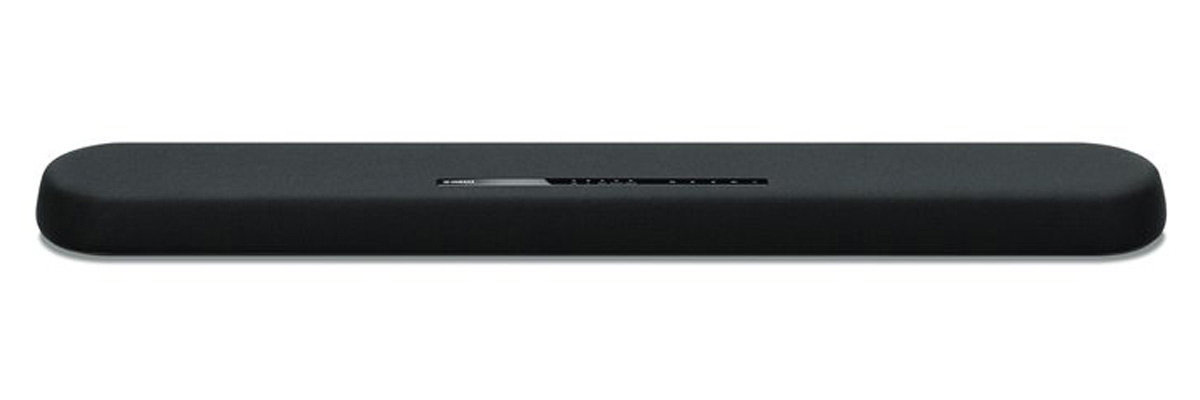
The Yamaha YAS-108 model relatively recently appeared on the market, replacing a very successful device with an index of 107, which we wrote about several times. The main difference between the new items was the presence of two built-in subwoofers and support for the DTS Virtual:X format.
Inside, the Yamaha YAS-108 has everything you need to ensure that it takes on not only the audio viewing features but also the switching center for various sources of audio and video signals. In total, there are two digital inputs - HDMI and optical. There is also an analog input on the 3.5 mm mini-jack, outputs - HDMI, and an analog output to the subwoofer. Support for all major signal formats and HDMI functions is present, including HDR10 and HLG, as well as ARC and CEC control protocols. Wireless capabilities are represented here by Bluetooth of the latest version 5.0, which is enough to connect a smartphone or tablet and stream music from them. The kit also includes a small and convenient remote control.
Yamaha YAS-108 is a phase inverter system in which two identical three-way speakers are combined, the HF / MF part being swung by two 30-watt amplifiers, and a separate module for 60 Watt is allocated for bass. Two tweeters with an inch dome are responsible for high frequencies, two drivers with diffusers of 2 1/8 inches each are responsible for the mid-frequency range. Built-in subwoofers are two miniature 3-inch speakers. A little funny, of course, but laptops in which we called “subwoofers” as tweeters the size of a five-ruble coin have long accustomed us to such slang. In fact, everything is not so bad here, because in the Yamaha YAS-108 low-frequency drivers are loaded on rather long, for a given size of the case, phase-inverter pipes. Due to this, and also thanks to the powerful built-in amplifier, the soundbar should be very good to bass. 
The physical controls located on the top panel allow you to steer almost all the functions of the Yamaha YAS-108. If you don’t want to use the included remote control and are used to using a smartphone, then download the proprietary Yamaha Home Theater Controller application, it works when connecting a mobile device and a soundbar via Bluetooth and offers advanced functionality.
As for the films, here the YAS-108 is in its element. In any placement, whether horizontal or vertical, the soundbar with bluetooth creates a very convincing effect of a three-dimensional sound field surrounding the viewer. Compared to the top models of the company that support Dolby Atmos, the vertical dimension in special effects is not so pronounced, but there is definitely a hint of it. As for the model’s ability to penetrate the very depths of the bass, there are also no surprises here - shots and explosions sound biting and distinct, but they still lack a little weight, so buying a branded external subwoofer will not be superfluous. And given the very affordable price of the model, you will definitely have money for such a purchase.
Key specs
- Built-in channels: 2.0
- Separate subwoofer (in package): no
- Bluetooth: yes
- Size (Wx H x D), cm/in: 88.9 x 5.3 x 12.9/35 x 2.1 x 5.1
- Official website
- Full specs
Pros
- The speaker includes DTS Virtual:X and HDMI connectivity with support for 4K HDR video
- You can add your own subwoofer for more bass
Cons
- The lack of a separate subwoofer means it doesn't perform as well with action movies or rock or dance music
Without subwoofer
Sonos Beam
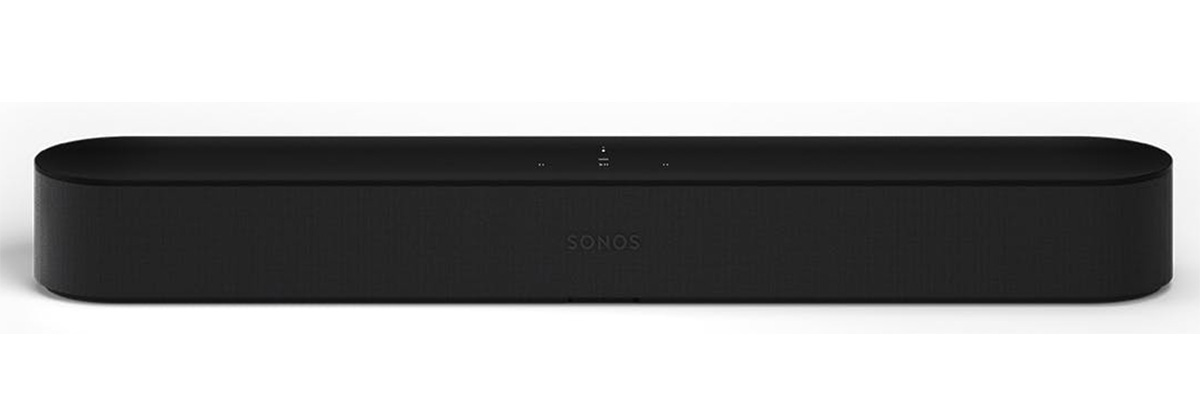
In June 2018, the well-known acoustic manufacturer Sonos introduced the world its new creation - an elongated, rounded-shaped soundbar Sonos Beam. The soundbar allows you to control your TV with Amazon's built-in Alexa voice assistant. It can broadcast music from almost any source, and also provides rich cinematic sound.
The stylish and elegant design of the Sonos Beam soundbar makes it ideal for modern rooms with a modest area. And also, for interiors made in the style of minimalism, where the key to the idyll is: versatility, simplicity, and conciseness of details.
Due to its strikingly small size, the soundbar will not block your TV screen, so feel free to place Beam on a shelf under it. This will make installing the soundbar easier and safer.
There are three ports on the rear panel: power, Ethernet, and HDMI ARC. In addition, there is a button for attaching Sonos Beam to an existing ecosystem of speakers.
The Sonos Beam is part of the Sonos sound system, so it will be an excellent choice for those who already have representatives of this acoustics in the house. Connect a soundbar to your speakers for more surround sound of your favorite tunes. When listening to music, you can also use voice support features.
Sonos Beam Wireless Home Audio System supports 74 music services, movies, TV shows, podcasts, radios, video games, audiobooks, and Apple AirPlay 2.
Sonos Beam is controlled using the free Sonos Controller App, which can be installed on any Windows or Mac OS computer, smartphone, or tablet on iOs or Android. Thus, you can control any component of the Sonos multi-room system from anywhere in the room.
Sonos multi-room audio systems automatically adjust the sound to the room in which they are located. For this, the company's specialists developed Trueplay technology. This system automatically calibrates the sound of Sonos devices according to the acoustics of the room where they are installed.
On the back of the Sonos Beam soundbar, there is an HDMI port with support for ARC (Audio Return Channel). Using this port, you can manipulate some functions of the TV, including volume through voice commands. To perform these and other functions, your TV must support HDMI ARC technology. 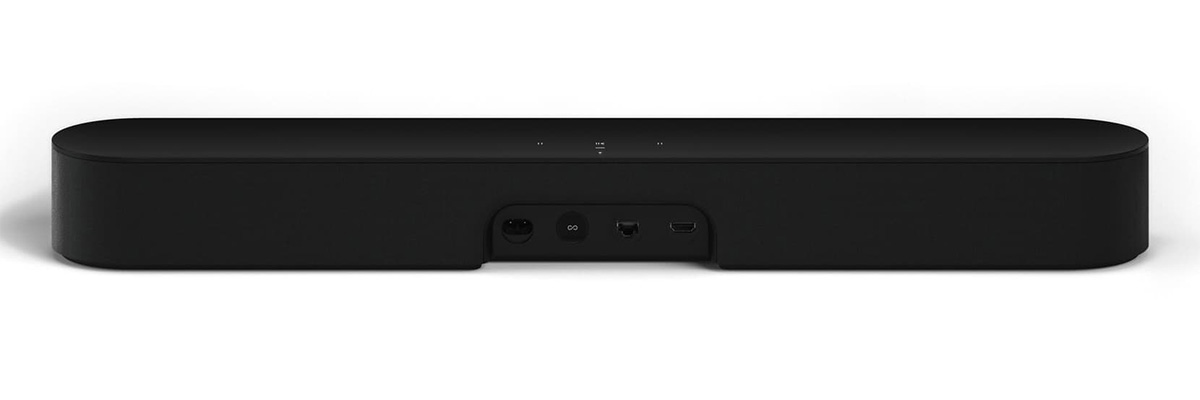
For older models of home screens, an Optical Audio Adapter is provided. However, with this connection, voice control of the TV will not work.
On the top of the case, there are touch controls similar to the Sonos One. Alexa assistant (setting, which is carried out through the application) will signal that you are ready to execute your commands, with a short beep and blinking LED indicator.
Key specs
- Built-in channels: 3.0
- Separate subwoofer (in package): no
- Bluetooth: yes
- Size (Wx H x D), cm/in: 65 x 6.8x 10/25.6 x 2.7 x 3.9
- Official website
- Full specs
Pros
- The late-night setting (voice boost and lower loud noises) is very helpful
- The native Apple Airplay streaming without the need for the Sonos app (it allows streaming collectively to the Play:1s also) is a great bonus also
Cons
- The issue I have is codec support. Sonos has DD support and literally nothing else
Bose Solo 5

A small, inexpensive soundbar with many functions - Bose Solo 5 very pleased us with the excellent sound quality in films and games. There is Bluetooth, a universal remote control, and much more.
The appearance of the device is as neutral as possible, a sort of long black block with a single indicator light and a silver Bose logo. At the back there are cable connectors, optical, coaxial, analog audio inputs, I advise everyone to use “optics,” fortunately, there is such a cable in the kit. A rear USB port is required for software updates. Do not forget to make the necessary manipulations in the TV settings so that the sound immediately reproduces from Solo 5. The huge remote control is convenient and can replace you with remote control from the TV and other devices; for example, I use it with a TV and player. If you look closely, here, you will also see the Bluetooth buttons and Bass. The first one is needed to activate a wireless connection. Yes, the soundbar can easily turn into a speaker for the living room, given that there are well-tuned speakers, this makes sense. The Bass button will help to add low frequencies if your house has good audibility, it is better not to abuse the low frequencies.
To connect the BOSE SOLO 5 TV Sound system to the source, you can use the digital optical, coaxial connectors, or the analog 3.5 mm AUX input. Near the audio connectors are the power supply interface and the USB service port. In addition to wired switching interfaces, the sound projector boasts an integrated Bluetooth module, with which you can provide fast wireless streaming of files from a smartphone, tablet, or personal computer. 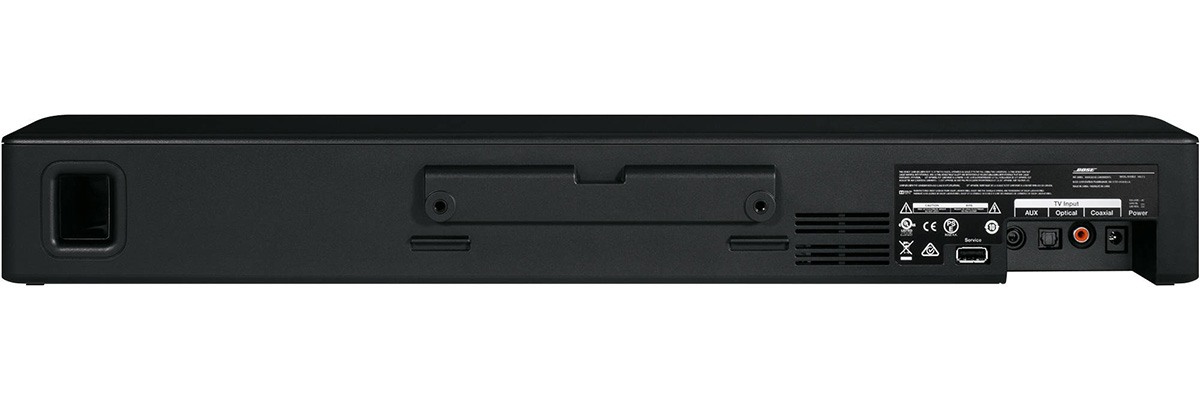
The speakers located on the front panel are designed to form an assertive frontal sound wave with a three-dimensional scene. With a state-of-the-art reproduction scheme and high-quality amplifier, the BOSE sound projector delivers the rich sound output with decent 100 watts of power. It is worth noting that the SOLO 5 TV Sound system model perfectly copes with playing TV audio content and music from mobile sources.
Key specs
- Built-in channels: 2.0
- Separate subwoofer (in package): no
- Bluetooth: yes
- Size (Wx H x D), cm/in: 21.6 x 2.8 x 3.4/54.9 x7 x 8.6
- Official website
- Full specs
Pros
- Interactive mode provides improved speech intelligibility
- Wirelessly play online music services using the built-in Bluetooth technology
- A universal remote control allows you to control your TV and other connected devices
Cons
- Not too suitable for music
-
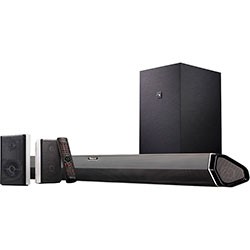
Nakamichi Shockwafe Pro 7.1
- Nakamichi
- | 1000
- 2241
-
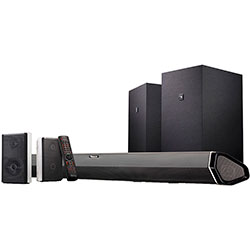
Nakamichi Shockwafe Elite 7.2
- Nakamichi
- | 1000
- 3541
-
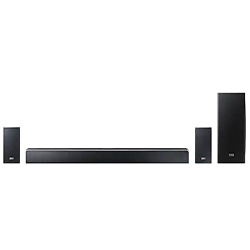
Samsung HW-Q90R
- Samsung
- | 1800
- 1662
-
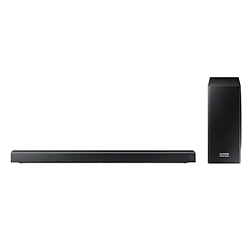
Samsung HW-Q80R
- Samsung
- | 1100
- 1662
-
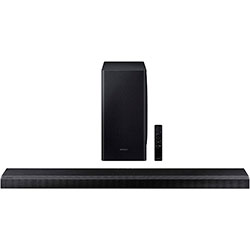
Samsung HW-Q800T
- Samsung
- | 900
- 1048
-

Samsung HW-Q70T
- Samsung
- | 700
- 664
-
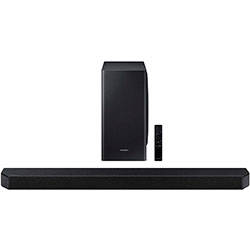
Samsung HW-Q900T
- Samsung
- | 1300
- 664
-
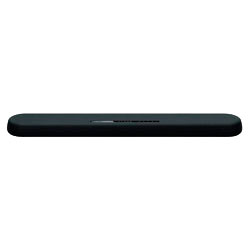
Bose Soundbar 700
- Bose
- | 800
- 915
-
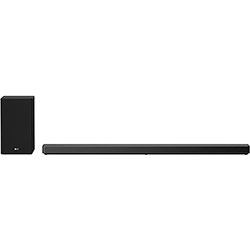
LG SN10YG
- LG
- | 1300
- 7
-

LG GX
- LG
- | 1000
- 3
-
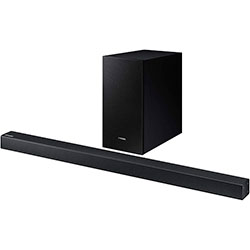
Samsung HW-R450
- Samsung
- | 200
- 1577
-
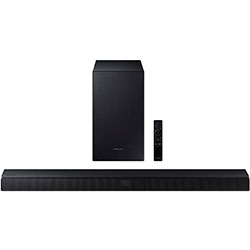
Samsung HW-T550
- Samsung
- | 300
- 3970
-
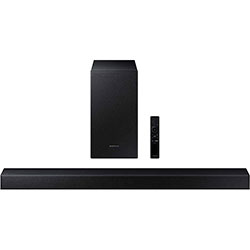
Samsung HW-T450
- Samsung
- | 200
- 3970
-
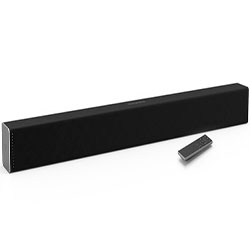
VIZIO SB2920-C6
- VIZIO
- | 200
- 6525
-
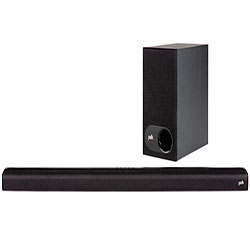
Polk Audio SIGNA S2
- Polk Audio
- | 300
- 6669
-

Samsung HW-Q60R
- Samsung
- | 500
- 1662
-
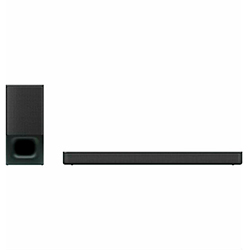
Sony HT-S350
- Sony
- | 300
- 2158
-
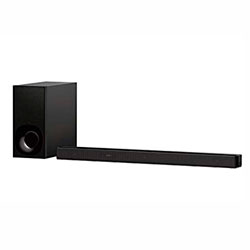
Sony HT-Z9F
- Sony
- | 900
- 349
-

JBL Bar 5.1
- JBL
- | 500
- 3060
-
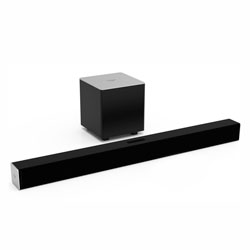
VIZIO SB3821-C6
- VIZIO
- | 300
- 8357
-
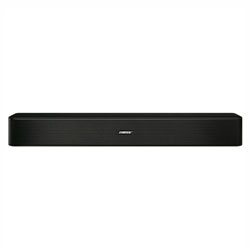
Bose Solo 5
- Bose
- | 200
- 13457
-

VIZIO SB2821-D6
- VIZIO
- | 200
- 2005
-

Sonos Beam
- Sonos
- | 400
- 3280
-
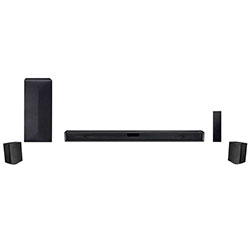
LG SNC4R
- LG
- | 200
- 9
-
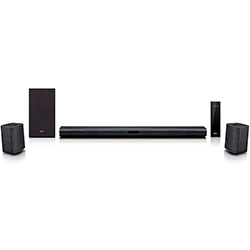
LG LASC58R
- LG
- | 400
- 72
-
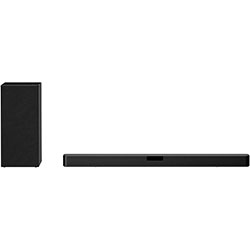
LG SN5Y
- LG
- | 300
- 168
-
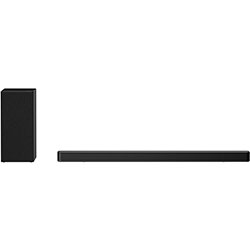
LG SN6Y
- LG
- | 400
- 87
-
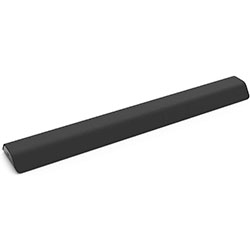
Vizio M21d-H8
- Vizio
- | 200
- 4
-
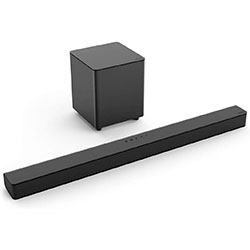
Vizio V21-H8
- Vizio
- | 200
- 21
-
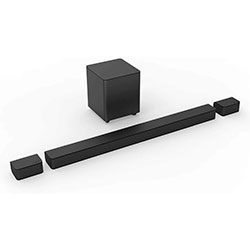
Vizio V51-H6
- Vizio
- | 300
- 254
-

Yamaha SR-B20A
- Yamaha
- | 200
- 34
-
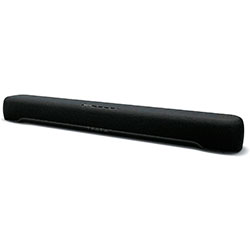
Yamaha SR-C20A
- Yamaha
- | 200
- 1
-
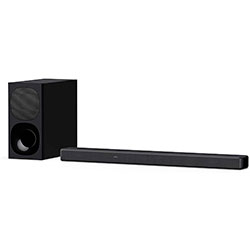
Sony HT-G700
- Sony
- | 600
- 221
-
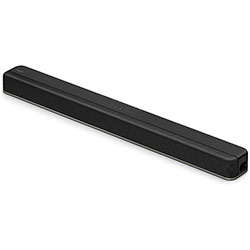
Sony HT-X8500
- Sony
- | 300
- 171
-
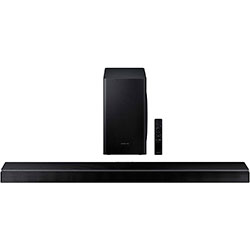
Samsung HW-Q60T
- Samsung
- | 500
- 1048
-
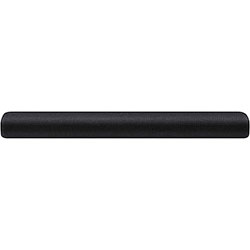
Samsung HW-S40T
- Samsung
- | 200
- 235
-
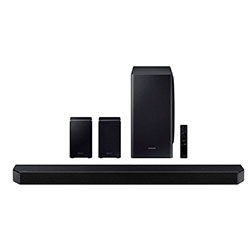
Samsung HW-Q950T
- Samsung
- | 1700
- 28
-

Bose Smart Soundbar 300
- Bose
- | 400
- 144
-
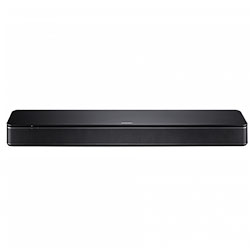
Bose TV Speaker
- Bose
- | 300
- 795
-
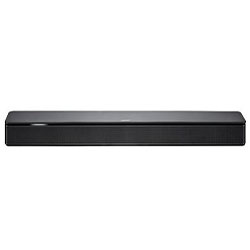
Bose Soundbar 500
- Bose
- | 600
- 407
-
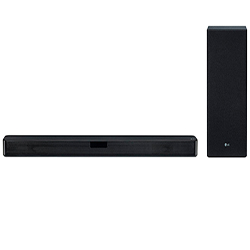
LG SL5Y
- LG
- | 300
- 379
-

Yamaha MusicCast BAR 400
- Yamaha
- | 500
- 159
-
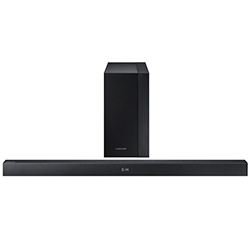
Samsung HW-M360
- Samsung
- | 300
- 200
-
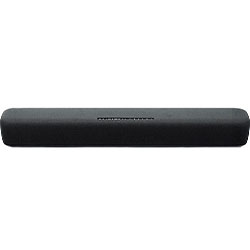
Yamaha YAS-209
- Yamaha
- | 400
- 769
-

Yamaha YAS-109
- Yamaha
- | 200
- 766
-
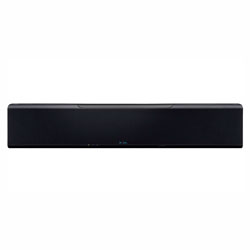
Yamaha YSP-5600
- Yamaha
- | 1700
- 52
-
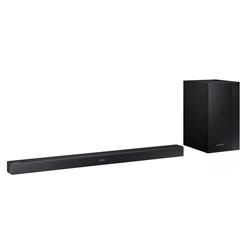
Samsung HW-M360/ZA
- Samsung
- | 300
- 908
-
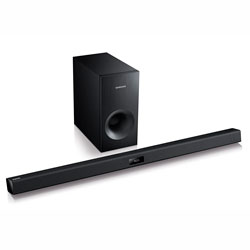
Samsung HW-J355
- Samsung
- | 300
- 1116
-
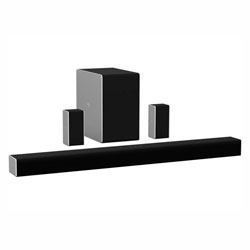
VIZIO SB36512-F6
- VIZIO
- | 500
- 150
-
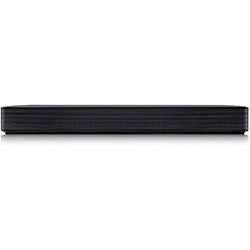
LG SK1
- LG
- | 200
- 126
-
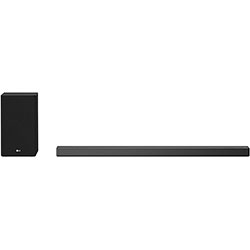
LG SN9YG
- LG
- | 900
- 18
-

LG SN11RG
- LG
- | 1500
- 19
-
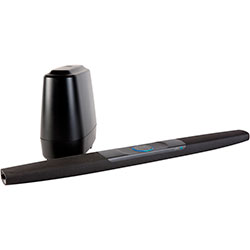
Polk Audio Command Bar
- Polk Audio
- | 300
- 1506
-
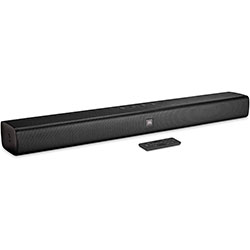
JBL Bar Studio
- JBL
- | 200
- 828
-
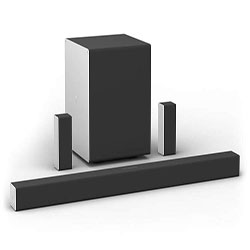
VIZIO SB46514-F6
- VIZIO
- | 1000
- 196
-
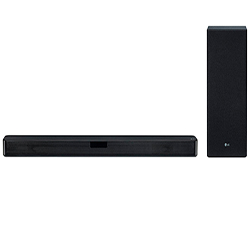
LG SL9YG
- LG
- | 600
- 27
-
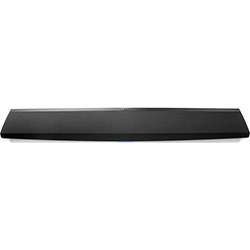
Denon HEOS BAR
- Denon
- | 900
- 20
-
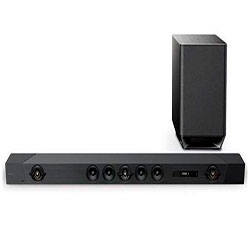
Sony HT-ST5000
- Sony
- | 1500
- 173
-

Yamaha YSP-2700
- Yamaha
- | 1200
- 27
-
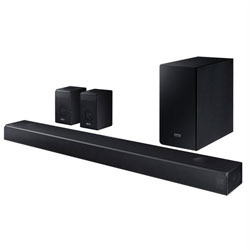
Samsung HW-N950
- Samsung
- | 1700
- 106
-
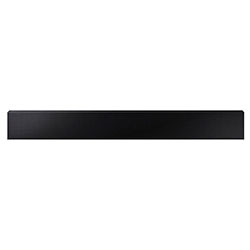
Samsung HW-LST70T
- Samsung
- | 1200
- 3
-

Klipsch Cinema 400
- Klipsch
- | 400
-
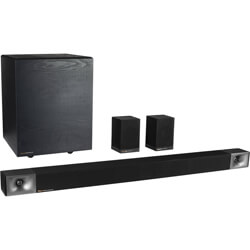
Klipsch Cinema 600
- Klipsch
- | 600
-
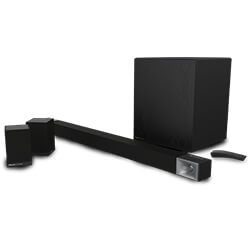
Klipsch Cinema 800
- Klipsch
- | 1000
-
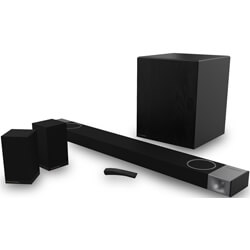
Klipsch Cinema 1200
- Klipsch
- | 1900
-
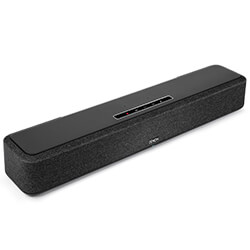
Denon Home Sound Bar 550
- Denon
- | 700
-
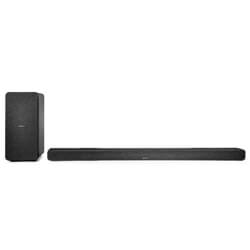
Denon DHT-S517
- Denon
- | 500
-

Denon DHT-S316
- Denon
- | 300
-

Denon DHT-S216
- Denon
- | 400
-

Denon DHT-S217
- Denon
- | 300
-
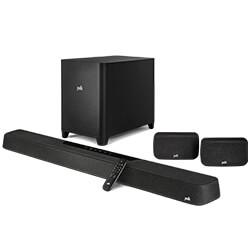
Polk Audio MagniFi Max SR
- Polk Audio
- | 600
-
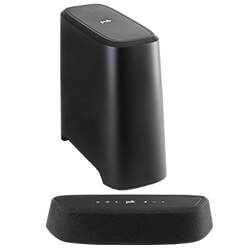
Polk Audio MagniFi Mini AX
- Polk Audio
- | 500
-

Polk Audio MagniFi 2
- Polk Audio
- | 500
-

Polk Audio Signa S3
- Polk Audio
- | 300
-
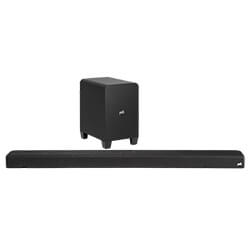
Polk Audio Signa S4
- Polk Audio
- | 400
-

Polk Audio React
- Polk Audio
- | 300
-
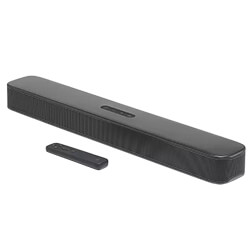
JBL Bar 2.0
- JBL
- | 200
-
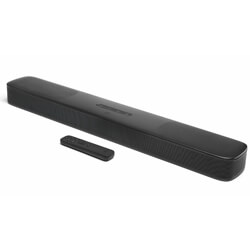
JBL Bar 5.0
- JBL
- | 400
-
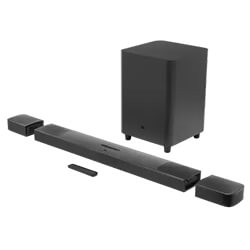
JBL Bar 9.1
- JBL
- | 1200
-
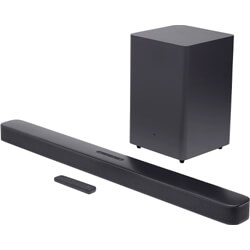
JBL BAR 300
- JBL
- | 400
-
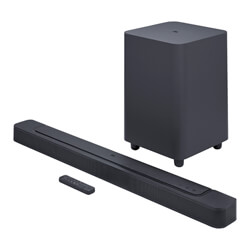
JBL BAR 500
- JBL
- | 600
-
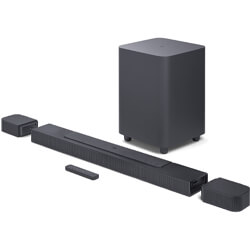
JBL BAR 700
- JBL
- | 900
-
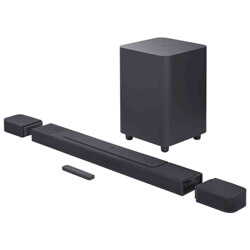
JBL BAR 1000
- JBL
- | 1200
-
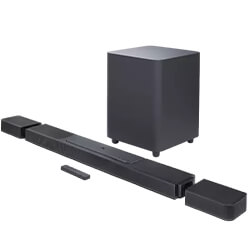
JBL BAR 1300X
- JBL
- | 1700
-
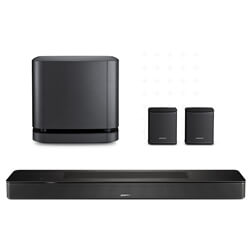
Bose Smart Soundbar 600
- Bose
- | 500
-
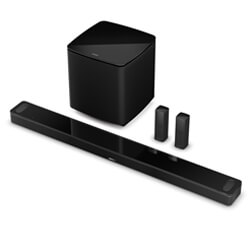
Bose Smart Soundbar 900
- Bose
- | 900
-

Bose Smart Ultra Soundbar
- Bose
- | 900
-
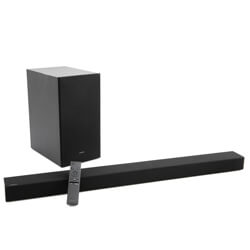
Samsung HW-A450
- Samsung
- | 300
-
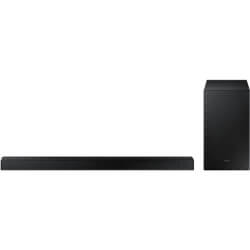
Samsung HW-A550
- Samsung
- | 300
-
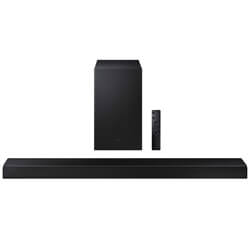
Samsung HW-A650
- Samsung
- | 400
-
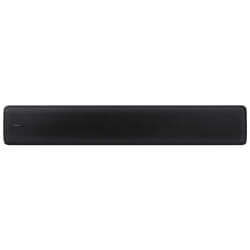
Samsung HW-S60A
- Samsung
- | 400
-
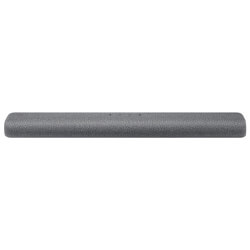
Samsung HW-S50A
- Samsung
- | 300
-

Samsung Q700B
- Samsung
- | 700
-
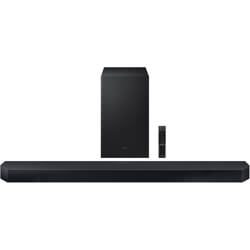
Samsung Q700C
- Samsung
- | 700
-
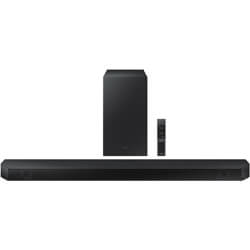
Samsung Q600B
- Samsung
- | 600
-
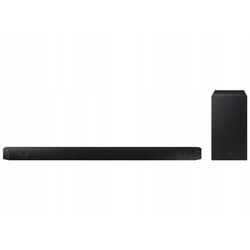
Samsung Q60B
- Samsung
- | 500
-
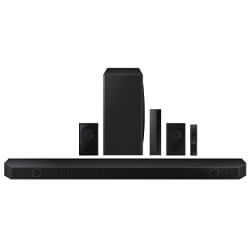
Samsung Q60C
- Samsung
- | 500
-
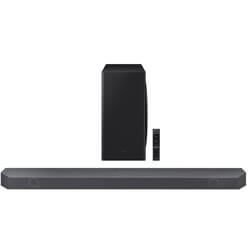
Samsung Q800B
- Samsung
- | 1000
-

Samsung Q910B
- Samsung
- | 1300
-
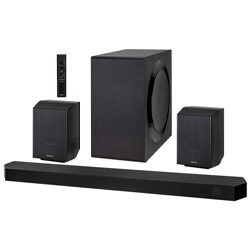
Samsung Q990B
- Samsung
- | 1900
-
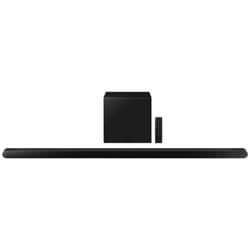
Samsung S800B
- Samsung
- | 900
-

Samsung S60B
- Samsung
- | 400
-
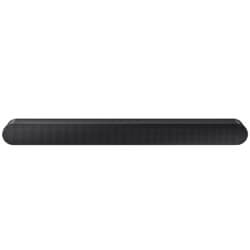
Samsung S50B
- Samsung
- | 300
-
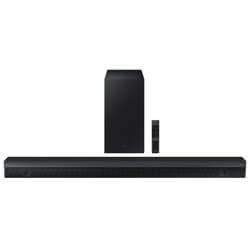
Samsung B650
- Samsung
- | 400
-
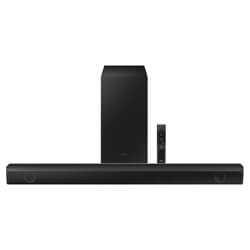
Samsung B550
- Samsung
- | 300
-
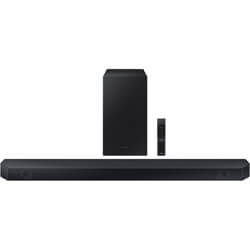
Samsung Q600C
- Samsung
- | 600
-
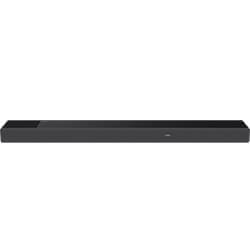
Sony HT-A7000
- Sony
- | 1400
-
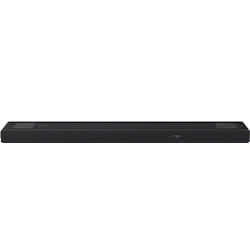
Sony HT-A5000
- Sony
- | 1000
-
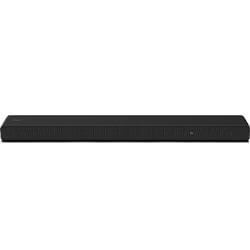
Sony HT-A3000
- Sony
- | 700
-
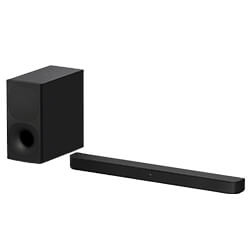
Sony HT-S400
- Sony
- | 300
-
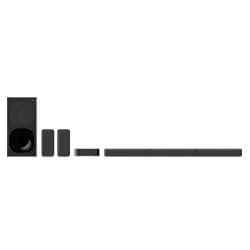
Sony HT-S40R
- Sony
- | 300
-
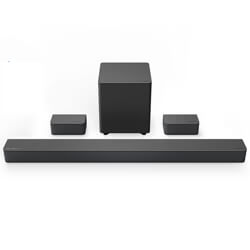
VIZIO M51ax-J6
- VIZIO
- | 400
-
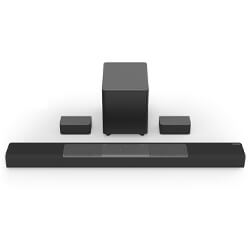
VIZIO M512a-H6
- VIZIO
- | 500
-
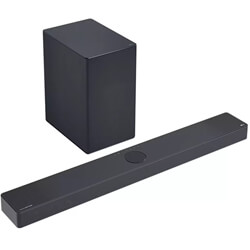
LG SC9S
- LG
- | 1000
-
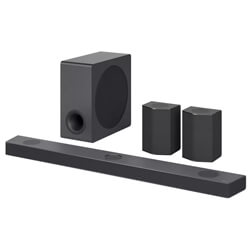
LG S95QR
- LG
- | 1800
-

LG SP2
- LG
- | 200
-

LG S80QY
- LG
- | 600
-
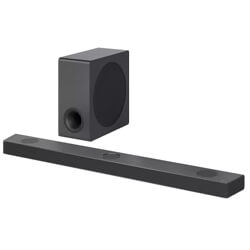
LG S90QY
- LG
- | 900
-

LG SPD7Y
- LG
- | 400
-
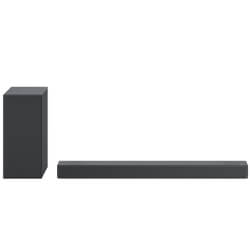
LG S75QR
- LG
- | 600
-

LG S65Q
- LG
- | 400
-
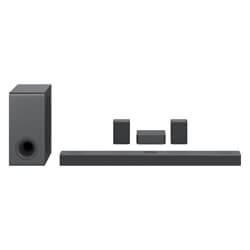
LG S80QR
- LG
- | 1100
-
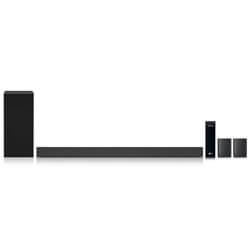
LG SP7R
- LG
- | 200
-
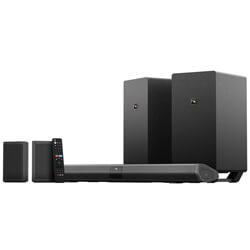
Nakamichi Shockwafe Elite 7.2 eARC
- Nakamichi
- | 1300
-
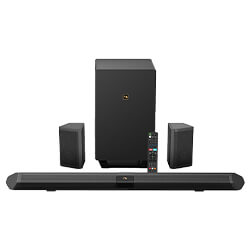
Nakamichi Shockwafe Pro 7.1 eARC
- Nakamichi
- | 900
-

Nakamichi Shockwafe Ultra 9.2 eARC
- Nakamichi
- | 1900
-
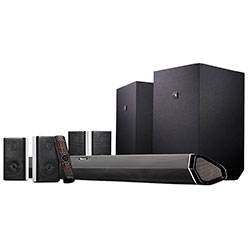
Nakamichi Shockwafe Ultra 9.2
- Nakamichi
- 2241
-
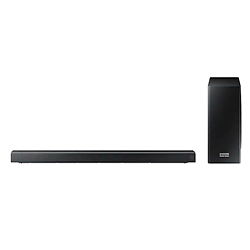
Samsung HW-Q70R
- Samsung
- 1662
-
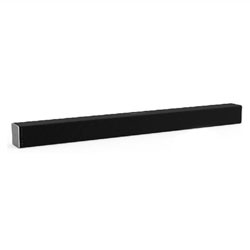
VIZIO SB3820-C6
- VIZIO
- 2630
-
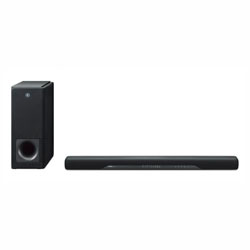
Yamaha YAS-207
- Yamaha
- 2129
-

Yamaha YAS-108
- Yamaha
- 1385
-
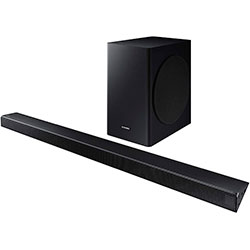
Samsung HW-R650
- Samsung
- 468
-
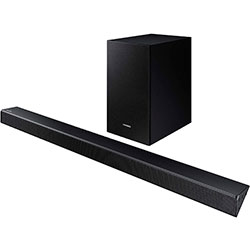
Samsung HW-R550
- Samsung
- 1236
-

Sonos Arc
- Sonos
- 368
-
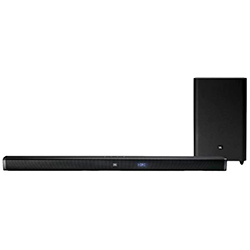
JBL Bar 2.1
- JBL
- 548
-
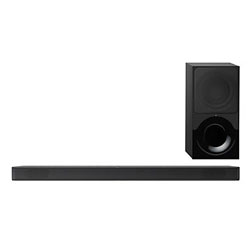
Sony HT-X9000F
- Sony
- 234
-
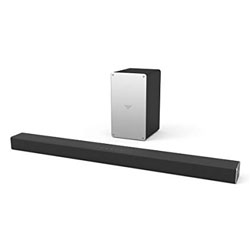
VIZIO SB3621n-F8M
- VIZIO
- 639
-
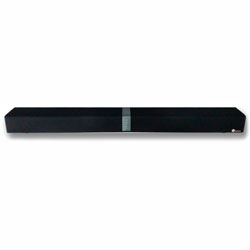
TaoTronics TT-SK15
- TaoTronics
- 5570
-

LG SN8YG
- LG
- 40
-

Polk Audio MagniFi One
- Polk Audio
- 211
-
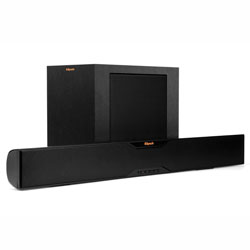
Klipsch R-10B
- Klipsch
- 420
-
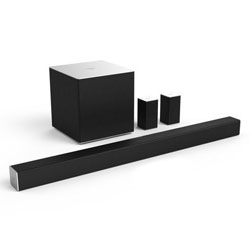
VIZIO SB4451-C0
- VIZIO
- 121
-
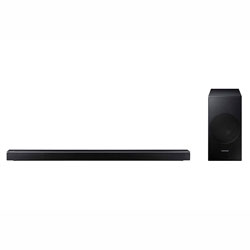
Samsung HW-N650
- Samsung
- 68
-
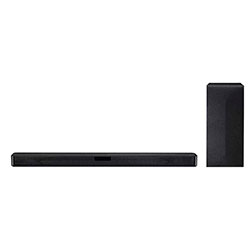 OLD MODEL
OLD MODELLG SLM4R
- LG
-
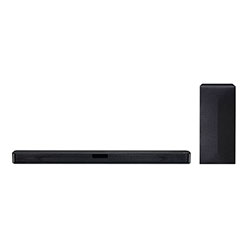 OLD MODEL
OLD MODELLG SN4Y
- LG
-
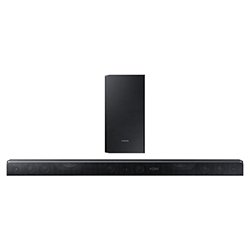 OLD MODEL
OLD MODELSamsung HW-K850
- Samsung
- 75
-
 OLD MODEL
OLD MODELAkixno SR210
- Akixno
- 91
-
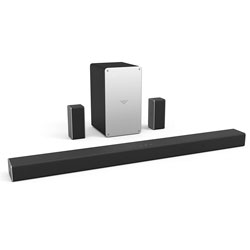 OLD MODEL
OLD MODELVIZIO SB3651-E6
- VIZIO
- 270
-
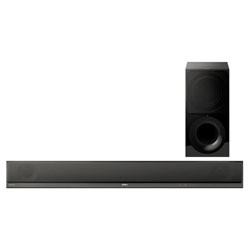 OLD MODEL
OLD MODELSony HT-CT800
- Sony
- 267
-
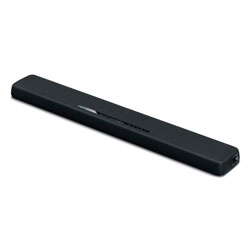 OLD MODEL
OLD MODELYamaha ATS-1070
- Yamaha
-
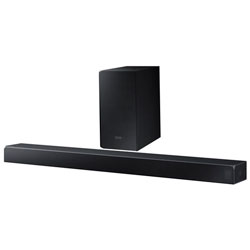 OLD MODEL
OLD MODELSamsung HW-N850
- Samsung
- 29
-
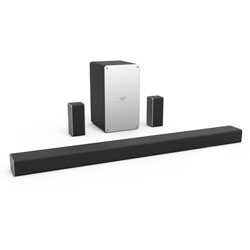 OLD MODEL
OLD MODELVIZIO SB3651-F6
- VIZIO
- 373
-
 OLD MODEL
OLD MODELYamaha YAS-107
- Yamaha
- 761
Popular soundbar comparisons

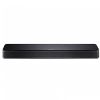
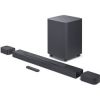

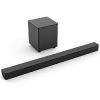
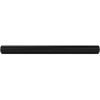
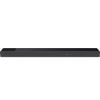

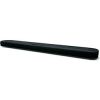
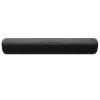
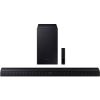

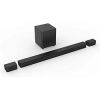
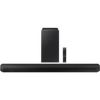
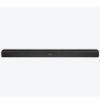

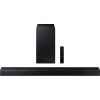

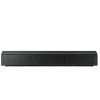


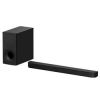
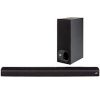

Recent reviews
